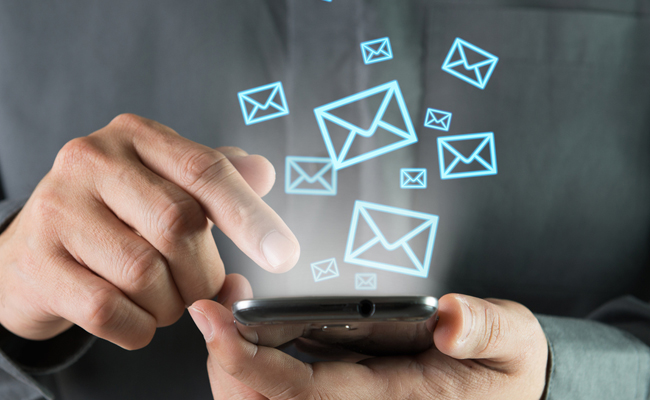OpenMarket – February 4, 2016
Customer service is an essential function for any business. It’s what makes your brand experience unique, and what keeps people coming back to you, even if they might have had an imperfect experience. But the way people want to engage with customer service is changing.
Traditional methods of customer service, like a dedicated 800 toll-free line, are becoming obsolete, and new ways of communicating, such as text messaging, are becoming the preferred means of contact. In fact, many companies who still have 800 numbers are starting to text-enable them.
The Decline of the 800 Number
The 800 number has been a long and honored standby for customer service. It first arose as an affordable way for consumers to communicate with a brand representative no matter how far away they lived. In an age when phones represented the pinnacle of communications technology, this was impressive.
But today, technology is far more advanced and diverse. As a result, customers have become more demanding. In particular, 800 numbers are less respected for a variety of reasons:
- Dial menus. When people call an 800 number, they expect to speak with a person. Instead, most businesses forced callers to go through a series of options in a dial menu. Most customer-service departments will tell you this approach saves time by directing each call to its proper location without the expense of many worker-hours, it also tends to irritate customers and leaves them feeling unhelped.
- Hold times. Hold times are another irritant, sometimes in conjunction with a dial menu and sometimes as an independent functioning. When all your customer service reps are busy, there are few options other than to put a caller on hold, but for that person, the process is highly frustrating.
- Unpredictable results. It’s rarely guaranteed that you’ll have a positive customer service experience over the phone. You might wait for an hour or you might be connected right away. You might get someone who’s helpful and polite, or someone curt and dismissive. This tends to give calling an unappealing prospect.
- Inconvenient times. Though there are some 24-hour hotlines, most 800 numbers are only active during certain hours of the day, which is inconvenient if not impossible for some customers to get the help they need.
More than 64 percent of customers would prefer to exchange text messages rather than have to stay on hold with an 800 number, and 77 percent of millennials think more positively of companies who offer SMS texting as an option. So if you can offer it, why wouldn’t you text-enable the number you already own?
How Mobile Messaging Alleviates the Pain
It’s worth noting that at least 68 percent of customer service experts agree that mobile messaging solutions reduce most of the pain points associated with traditional customer service models. Here’s how:
- It’s instant. Text messages are sent and received instantly, which cuts even the time it takes to dial a number and wait for the phone to ring.
- There’s no hold. Even in the busiest periods of customer traffic, there’s no such thing as a hold time.
- The information is retainable. Instead of having to take notes over the phone or question what the representative actually said, you have a physical copy of the correspondence. You can refer back to it at any time.
- It’s standardized. Text messages are composed with care and sometimes even automated, which means the quality and conciseness of your messaging tends to have to improve.
- It’s convenient. Most of us carry our phones with us at all times, and that means we’re always available to receive messages. They never interrupt our day or interfere with our schedules.
Reminders
There are a number of ways SMS can be used in your customer service, including troubleshooting and FAQ responses, but one of the most practical is through the use of reminders. You can set up automated reminders for practically anything you sell, or anything that’s relevant to your customers.
You might remind them that the show they bought tickets for is coming up in a week, or give them 24 hours’ notice of an upcoming appointment. Simple reminders keep your brand in people’s minds and give customers a little extra value.
Alerts
Alerts are also worthwhile, and serve a similar function as reminders. They are reactionary, however, compared to reminders which tend to be more proactive. For example, if a customer’s order has shipped out, you can send a notification text to inform him or her. If something sudden has come up and you have to cancel an appointment, you can send an SMS notification for that as well.
These can be used for both positive and negative situations, but the extra communication tends to be appreciated in both cases.
Card Activation and Security
Text messages can improve your company security, particularly if you rely on customer logins, through a two-factor authentication system (2FA). There are three primary factors you can employ for positive identification: knowledge (such as passwords), possessions (for example, mobile phones), and inherence (like fingerprints). By asking for both a user’s password (knowledge) and verification of a mobile phone through text (possession), you can greatly increase the security of your system. Card activations, as well, can be made simpler and more secure through text message activation procedures.
No matter what your company does or which industries you serve, you rely on customers for patronage. Improving your methods of communication with such customers should be one of your biggest priorities.
So, if you have an 800 number, be aware that many of your customers expect to text to it and receive a response. If you want to remain ahead of the competition in terms of your customer service capabilities, you’ll have to incorporate SMS text messaging into your customer service initiatives going forward. For more information, download our datasheet on mobile customer service.



